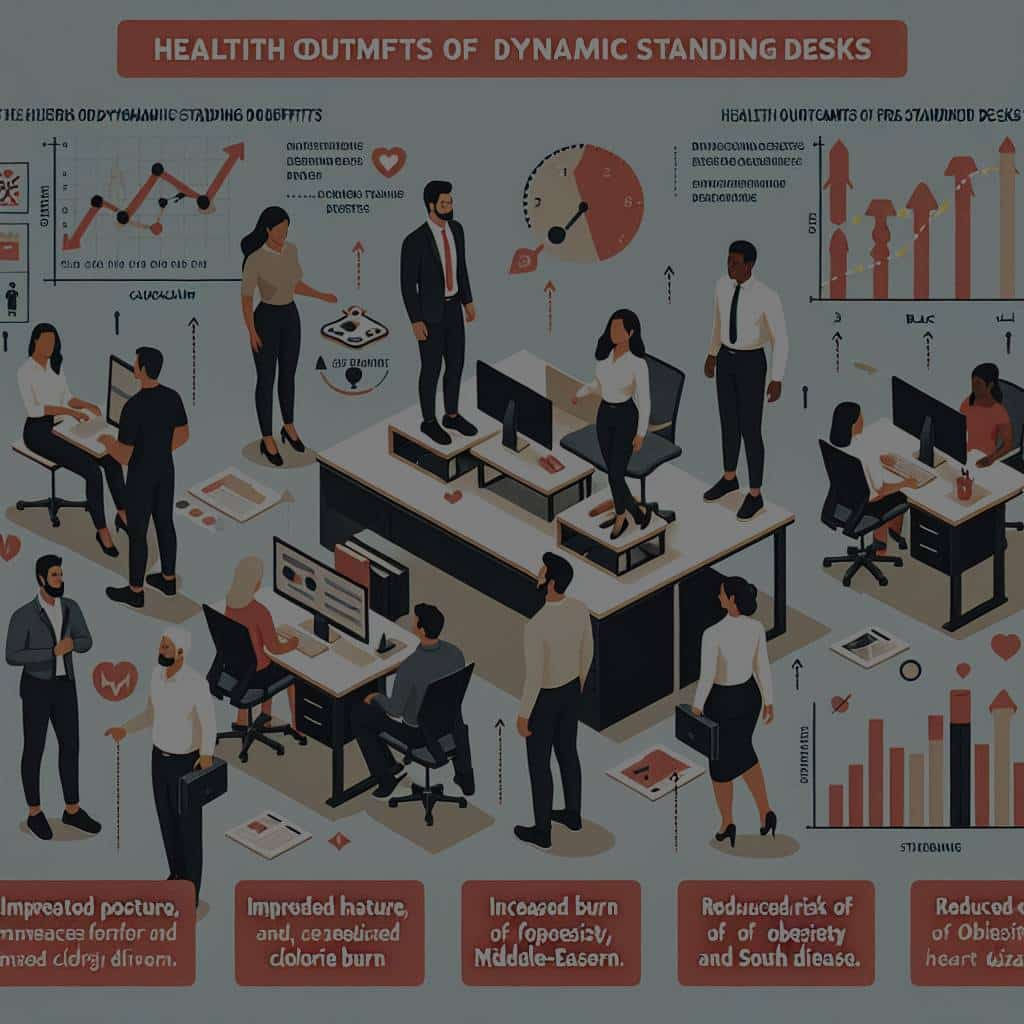What Are the Health Outcomes of Implementing Dynamic Standing Desks in Office Environments?

In the modern office environment, standing desks have made a considerable impact as an alternative to traditional sitting workstations. In the context of increasing awareness about health and well-being at work, these dynamic desks are creating a paradigm shift in how we approach our daily office duties. This article will delve into the scientific studies related to standing desks and their effect on the health of office workers over time.
The Rationale Behind Standing Desks
The premise of standing desks is relatively simple – to reduce the amount of time spent sitting during the average workday. Sitting for extended periods has been linked to several health concerns, including obesity, cardiovascular disease, and even certain types of cancer, as per several studies indexed on PubMed and CrossRef.
Also read : What Are the Best Strategies for Managing Tinnitus without Medication?
This section will examine the core reasoning behind the introduction of standing desks into the office environment, and how this ties in with the broader goals of promoting physical activity and health among workers.
According to a study published on Google Scholar, sitting has been dubbed the ‘new smoking’. The reason for this alarming comparison is the rising evidence showing how extended periods of sitting can negatively impact health. For instance, a study by the American Cancer Society found that women who sit for more than six hours a day were roughly 10% more likely to develop cancer than those who sit for less than three hours.
This might interest you : What Is the Efficacy of Peptide Therapy in Sports Injury Rehabilitation?
In response to these concerns, standing desks were introduced as a solution to counteract the negative effects of prolonged sitting. The idea is simple: by standing while working, individuals can reduce their sitting time and potentially mitigate the associated health risks.
Impact of Standing Desks on Physical Activity and Health
Having understood the rationale behind standing desks, let’s now shift our focus to their impact on physical activity and health. Are standing desks effective in promoting physical activity among office workers? And what are their tangible health benefits?
There’s a common misconception that standing is the antithesis of sitting and that it’s enough to counteract the adverse effects of a sedentary lifestyle. However, standing still also counts as a sedentary behavior because it involves very little physical movement. The real benefit of standing desks, as suggested by several papers on CrossRef and PubMed, is that they can encourage movement.
According to a study by the British Journal of Sports Medicine, standing desks can lead to a significant reduction in sitting time. The participants in this study reduced their sitting time by more than an hour per day when using standing desks. This reduction was associated with an increase in light physical activity and an improvement in psychological well-being.
Standing Desk Usage: The Ideal Height and Duration
As standing desks continue to grow in popularity, questions emerge around the ideal desk height and how long one should stand during the workday. This section will explore these two aspects based on existing research.
There’s no one-size-fits-all answer when it comes to the ideal height of a standing desk. It depends on various factors, including the worker’s height, the nature of their work, and their personal comfort. However, a general rule of thumb, as suggested by papers on CrossRef, is that the desk should be set at elbow height. This position allows the arms to rest at a 90-degree angle, which is considered ergonomically ideal.
Regarding the duration of standing, research suggests moderation is key. A study published in the Journal of Physical Activity and Health suggests alternating between sitting and standing every 30 minutes for the best health outcomes.
The Role of Management in Implementing Standing Desks
Standing desks are more than just office furniture; they represent a commitment to employee health and well-being. Therefore, their integration into the office environment requires supportive management who recognize the significance of these dynamic workstations.
It’s important for managers to understand the potential benefits and limitations of standing desks. They can use sources such as Google Scholar, PubMed, and CrossRef to stay informed about the latest research related to standing desks and health outcomes. This knowledge can help managers make informed decisions regarding the implementation of standing desks, such as deciding on the type of desks to purchase, providing guidelines for their use, and addressing any concerns from employees.
Moreover, management can play a crucial role in creating a culture that encourages the use of standing desks. This could involve providing training on how to use standing desks correctly, ensuring the desks are adjustable to accommodate different workers’ heights, and promoting periodic breaks to encourage a balance between sitting and standing.
The Future of Standing Desks in Office Environments
The future of office environments might look a lot different from what we’re used to, and standing desks are likely to play a significant role in this shift. While they are not a panacea for the health risks associated with sedentary lifestyles, they are a step in the right direction.
As more people become aware of the health risks associated with extended sitting, the demand for standing desks is likely to grow. This trend presents opportunities for innovation, with companies developing new designs and features to meet the varying needs of office workers.
Standing desks, when used properly, can support a more active and health-conscious work environment. They represent a potential shift in how we work, taking us away from the traditional, sedentary office setup and towards a more dynamic, health-promoting workspace. Their future implementation will likely be shaped by ongoing research, technological advancements, and evolving workplace cultures.
The Potential Drawbacks of Standing Desks
Although standing desks present several benefits, it’s also important to consider potential drawbacks. Just as extended sitting can lead to health problems, prolonged standing can also have negative impacts. This section will delve into these potential drawbacks and how they can be mitigated.
Prolonged standing has been associated with an increased risk of varicose veins, lower back pain, and fatigue as per PubMed and CrossRef databases. This raises the question of whether standing desks could lead to other health problems if not used properly or without the right balance.
A study on Google Scholar highlighted that workers who stood for over two hours reported discomfort and decreased mental reactiveness. Therefore, finding the right balance between sitting and standing is critical. Participants in this study reported the most benefit when they alternated between sitting and standing every 30 minutes.
Another potential drawback is the initial discomfort and adjustment period when transitioning to a standing desk. Office workers accustomed to sitting for long periods may experience fatigue and discomfort in their legs and feet. This period of adjustment may also impact productivity temporarily.
However, these drawbacks can be mitigated with proper use and additional supports. Employers can consider providing anti-fatigue mats for individuals who use standing desks. And as mentioned before, alternating between sitting and standing can help to avoid the negative impacts of both prolonged sitting and standing.
Conclusion: Balancing the Standing Desk Approach
While standing desks present a viable solution to the health risks of prolonged sitting, it’s clear that they should not be viewed as a standalone solution. Rather, they should be considered one component of a broader approach to promoting physical activity and reducing sedentary behavior in the workplace.
The key is to find a balance between sitting, standing, and moving. This is where the height adjustable desks come in handy, allowing workers the flexibility to sit or stand as they wish. Encouraging regular breaks for light physical activity, such as walking or stretching, can also contribute to a healthier work environment.
While standing desks may not be suitable for everyone, particularly those with certain health conditions, they can be beneficial for many workers. It’s crucial for each individual to assess their comfort and productivity levels when using a standing desk and to make adjustments as necessary.
In conclusion, the implementation of standing desks in an office environment represents a significant step towards promoting a healthier and more active workplace. They offer a promising solution to the health risks associated with extended sitting, provided they are used correctly and in balance with other healthy behaviors. As we move towards a future where health and well-being at work become ever more paramount, standing desks will undoubtedly play an important role. So, stand up for your health, but don’t forget to sit and move too!
